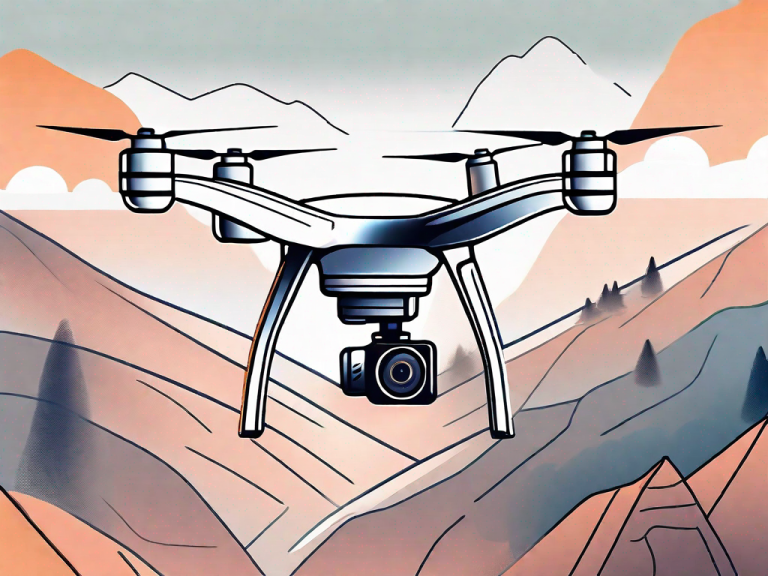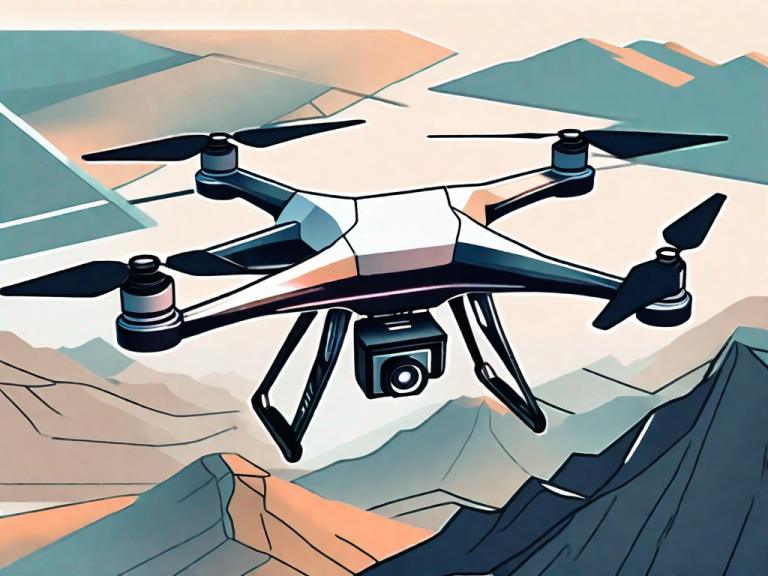In the realm of aerial photography, achieving a sense of balance and symmetry is crucial to capturing striking and visually pleasing images. Whether you’re a professional photographer or an enthusiastic hobbyist, understanding the importance of balance and symmetry in aerial photography can greatly elevate the impact of your shots. In this article, we will delve into the fundamentals of composition, explore various techniques for achieving balance and symmetry, and discuss the role of post-processing in enhancing these elements in your aerial photos.
Understanding the Importance of Balance and Symmetry in Aerial Photography
Balance and symmetry are fundamental principles of visual aesthetics that can significantly enhance the impact of your aerial photographs. Achieving balance involves distributing the visual elements in your photo harmoniously, while symmetry introduces a sense of order and harmony through mirroring or equal distribution of elements. These elements are essential in creating a sense of visual harmony and compelling composition that captivates viewers.
When it comes to aerial photography, balance and symmetry play an even more crucial role. The unique perspective offered by aerial shots allows for a broader view of the subject, making it easier to identify imbalances or asymmetry. By carefully considering the placement and distribution of elements within the frame, you can create a visually pleasing composition that takes full advantage of the aerial perspective.
The Basics of Composition: Achieving Balance and Symmetry in Aerial Shots
When composing your aerial photographs, it’s important to consider the placement and arrangement of the key elements within the frame. One key technique for achieving balance and symmetry is the rule of thirds. This rule suggests dividing your frame into a 3×3 grid and placing the main elements along the lines or intersections. This technique ensures that the visual weight of the elements is evenly distributed, resulting in a pleasing composition that draws the viewer’s eye.
Another approach to composition is utilizing leading lines. Leading lines are elements, such as roads, rivers, or geometric structures, that guide the viewer’s eye towards the main subject of the photo. By incorporating these lines into your aerial shots, you can create a strong sense of balance and symmetry, as well as add depth and visual interest to your photographs.
In addition to the rule of thirds and leading lines, another important aspect of achieving balance and symmetry in aerial shots is considering the use of patterns and repetition. Patterns can be found in natural or man-made elements, such as fields, buildings, or even waves in the ocean. By capturing these patterns from an aerial perspective, you can create a visually striking composition that adds a sense of harmony and order to your photographs.
Mastering the Rule of Thirds for Balanced Aerial Photos
The rule of thirds is a powerful tool for achieving balance and symmetry in your aerial photography. By dividing your frame into thirds both horizontally and vertically, you can position your main subject or points of interest along those lines or intersections. This technique ensures that your photo is visually balanced, allowing the viewer’s eye to flow naturally across the image.
When applying the rule of thirds, it’s essential to consider the different visual weights of the elements in your photo. For example, if you have a prominent building or landmark, you may position it along one of the vertical thirds, while a contrasting element, such as a body of water or a clear sky, could occupy the other two-thirds. This distribution creates a sense of equilibrium and symmetry within the composition.
Another benefit of using the rule of thirds in aerial photography is that it can help create a sense of depth and perspective. By placing objects of interest along the lines or intersections, you can guide the viewer’s gaze from the foreground to the background, giving the photo a three-dimensional feel. This can make the image more engaging and immersive.
In addition to achieving balance and depth, the rule of thirds can also enhance the storytelling aspect of your aerial photos. By strategically placing subjects or points of interest along the grid lines, you can create a visual narrative within the frame. For example, you could position a person or a vehicle along one of the vertical thirds, leading the viewer’s eye towards a specific area of the photo where the story unfolds. This storytelling technique adds a layer of intrigue and captivates the viewer’s attention.
Utilizing Leading Lines to Enhance Balance and Symmetry in Aerial Shots
Leading lines are powerful compositional elements that can greatly enhance the sense of balance and symmetry in your aerial photographs. These lines are typically found in the natural or manmade environment and can include roads, rivers, fences, or even architectural lines.
When incorporating leading lines into your aerial shots, it’s important to consider their direction and placement within the frame. Diagonal lines, for instance, can add a dynamic and energetic feel to your composition, while horizontal or vertical lines can create a more serene and balanced atmosphere. By aligning these leading lines with the rule of thirds or mirroring them across the frame, you can further emphasize the sense of balance and symmetry in your aerial photos.
Additionally, leading lines can also be used to guide the viewer’s eye towards a specific focal point in your aerial shots. By strategically positioning these lines, you can create a visual pathway that leads the viewer’s gaze towards the main subject or point of interest in the photograph. This can help to create a stronger sense of depth and engagement within the image, drawing the viewer in and enhancing the overall impact of the composition.
Creating Visual Harmony through Symmetrical Compositions
Symmetry is a powerful compositional tool that can create visual harmony and a sense of order in your aerial photographs. It involves mirroring or equal distribution of elements within the frame, thereby establishing a sense of balance and equilibrium. Symmetry can be found in various forms, such as reflections, architectural structures, or natural formations.
To achieve symmetrical compositions, you can explore aerial photography opportunities that highlight natural landmarks or architectural marvels with symmetrical features. By positioning your camera to capture the symmetrical elements in a balanced manner, you can create captivating images that evoke a sense of visual harmony.
One key aspect to consider when working with symmetrical compositions is the use of leading lines. Leading lines are elements within the frame that guide the viewer’s eye towards the main subject or focal point. These lines can be created by architectural features, roads, or even natural formations like rivers or tree lines. By incorporating leading lines into your symmetrical compositions, you can enhance the sense of depth and draw the viewer’s attention towards the center of the frame, further emphasizing the visual harmony created by the symmetrical elements.
The Power of Geometric Shapes in Achieving Balance and Symmetry in Aerial Photography
Geometric shapes play a significant role in creating balance and symmetry in aerial photography. Rectangles, triangles, circles, and other geometric forms can add structure and visual interest to your compositions. Incorporating these shapes into your aerial shots allows for the creation of visually appealing patterns that enhance the sense of balance and symmetry.
When photographing landscapes or cityscapes from above, observe the natural or manmade formations that exhibit geometric shapes. For example, an aerial photo of a city skyline featuring rows of rectangular buildings or a capture of a winding river forming a graceful curve can introduce strong visual elements that contribute to the overall balance and symmetry of the image.
Furthermore, geometric shapes can also be used to create a sense of depth and perspective in aerial photography. By strategically placing objects with different shapes and sizes in the frame, you can create a visual hierarchy that adds depth to the image. For instance, placing a large circular structure in the foreground and smaller triangular buildings in the background can create a sense of distance and depth in the photograph.
In addition to balance and symmetry, geometric shapes can also convey a sense of order and harmony in aerial photography. The repetition of shapes, such as a series of evenly spaced squares or a pattern of intersecting lines, can create a sense of rhythm and order in the composition. This can evoke a feeling of tranquility and balance in the viewer, enhancing the overall aesthetic appeal of the photograph.
Playing with Perspective: Tips for Balancing Elements in Aerial Photos
Perspective is a crucial aspect of aerial photography that can be utilized to create a sense of balance and symmetry in your shots. By altering your camera’s angle and height, you can manipulate the relative size and positioning of different elements within the frame.
Experiment with different perspectives to achieve the desired balance and symmetry. For instance, capturing a bird’s-eye view of a winding road can create a visually pleasing sense of symmetry, while a low-angle shot of a cityscape can emphasize the height and verticality of the buildings, adding a dynamic element to the composition. Be open to exploring different vantage points to maximize the balance and symmetry in your aerial photographs.
Enhancing Balance and Symmetry through Natural Landmarks and Features
Nature provides a wealth of opportunities to capture balanced and symmetrical aerial photographs. Utilize natural landmarks and features such as mountains, rivers, and coastlines to create a sense of harmony and equilibrium in your shots. These elements often possess their inherent symmetry, and by framing them strategically within your composition, you can further emphasize the sense of balance.
When photographing natural landscapes, consider the placement of significant elements within your frame. For instance, positioning the peak of a mountain along one of the horizontal thirds can create a visual balance, while allowing the natural contours of the land to guide the viewer’s eye across the frame can further enhance the sense of symmetry and harmony.
Using Reflections to Add a Sense of Balance and Symmetry to Aerial Images
Reflections offer a unique opportunity to introduce balance and symmetry into your aerial photographs. Bodies of water, glass facades, or even polished surfaces can act as reflective surfaces, providing a captivating mirrored representation of the subject.
When capturing reflections from above, ensure that the subject and its reflection are aligned in a way that creates a balanced and symmetrical composition. By positioning your camera at the right angle and height, you can produce compelling images that evoke a sense of tranquility and symmetry.
Balancing Light and Shadow for Harmonious Aerial Photography
Light and shadow play a crucial role in creating balance and symmetry in your aerial photographs. By understanding the interplay between light and shadow, you can emphasize specific elements within your composition and achieve a sense of equilibrium.
When capturing aerial shots, pay attention to the direction and quality of light. Consider the time of day and the angle at which the sunlight falls on the landscape. Harsh shadows can add contrast and depth, while soft, diffused light can create a more serene and balanced atmosphere. Explore different lighting conditions to find the right balance between light and shadow that enhances the overall composition of your photos.
Capturing Motion and Stillness: Finding Balance in Dynamic Aerial Shots
Aerial photography allows for capturing dynamic scenes where motion and stillness intersect, providing an opportunity to create a balanced composition. By incorporating moving subjects, such as cars, boats, or even flowing water, you can introduce an element of motion that complements the stillness of the static elements in your photo.
The key to achieving balance in dynamic aerial shots is to carefully compose your frame, ensuring that the moving elements occupy a balanced position within the overall composition. For example, positioning a moving boat along one of the vertical thirds can create a visually pleasing balance with the surrounding static elements.
The Role of Color in Creating Balanced and Symmetrical Aerial Photographs
Color plays a significant role in creating balance and symmetry in your aerial photographs. By understanding the color palette of the scene and how different hues interact with each other, you can achieve a visually harmonious composition.
When composing your aerial shots, consider the color relationships within the frame. Complementary colors, such as blue and orange or red and green, can create a vibrant and balanced composition. Additionally, pay attention to the distribution of colors within the frame to ensure a harmonious and well-balanced image.
Breaking the Rules: Creative Ways to Achieve Balance and Symmetry in Aerial Shots
While adhering to compositional rules can help you achieve balance and symmetry in your aerial photography, don’t be afraid to break the rules and experiment with your creativity. Give yourself the freedom to think outside the box and explore unconventional compositions that challenge traditional notions of balance and symmetry.
Think about unique perspectives, unusual subject placements, or even asymmetrical arrangements that create a captivating sense of balance in your aerial photographs. By embracing creativity and breaking away from conventional approaches, you can create truly distinctive and engaging images.
Post-Processing Techniques for Enhancing Balance and Symmetry in Aerial Photos
Post-processing is an essential part of the photography workflow that allows you to enhance the balance and symmetry in your aerial photographs. By utilizing editing software, you can refine the composition, adjust the tonal balance, and fine-tune various elements to achieve your desired aesthetic.
When applying post-processing techniques, consider subtle adjustments to alignment, cropping, or exposure to further enhance the sense of balance and symmetry in your aerial shots. Be mindful not to over-edit, as it can lead to an unnatural appearance that detracts from the overall visual impact of the photo.
Creating a sense of balance and symmetry in your aerial photos requires a keen eye for composition and an understanding of the various techniques available. By incorporating the fundamentals of balance and symmetry, experimenting with perspective and leading lines, and utilizing post-processing techniques, you can elevate the impact of your aerial photography and create captivating images that resonate with viewers.









